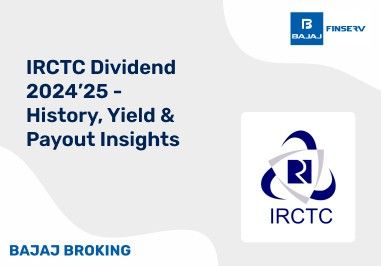BAJAJ BROKING
Ather Energy IPO is Open!
Open a Free Demat Account
Trade Now, Pay Later with up to 4x
Track Market Movers Instantly
What are the Risks Associated with Margin Trading
Margin trading is a revolutionary trading concept. It allows you to invest beyond your potential and amplifies your profits. The concept of margin trading is simple: you borrow funds from your broker to be used for the purchase of securities and stocks.
The risks of margin trading, however, are also real. You are constantly charged an interest for the borrowed money, your securities can be liquidated and your losses magnify. Whether you are an amateur investor or a veteran trader, it is of paramount importance that you understand the risks of margin trading so you make an informed decision.
Read on to know more about the risks of margin trading.
How does Margin Trading Work?
Margin trading means that you trade using borrowed funds, which are available to you by putting the traded stocks as a collateral. You are required to maintain a minimum margin amount in your account, typically expressed as a percentage.
If the value of your investments falls below this margin level, you will receive a margin call from your broker. A margin call is a demand for additional funds to bring your account back to the required level. If you fail to meet the margin call, the broker may liquidate your securities to cover the losses, leading to potential financial hardship.
Also Read: How to Activate Margin Trading Facility?
Risk Involved in Margin Trading
Since margin trading involves borrowing funds to invest in financial instruments, the risks associated therefore are higher. The borrowed money is available to you by placing your assets as collateral. If the market moves against your predictions, it can lead to your losses.
The risks of margin trading therefore are significant.
You can lose your own investment and will have to pay back the borrowed amount along with the interest amount. It is crucial to be aware of these risks before you decide to engage in this investment strategy.
Also Read: Risk Management in Margin Trading
Understanding Leverage and Its Risks
Leverage is the borrowed fund that you use to trade at the stock market and it lets you make an investment more than you could have afforded. Since your investment amount has now increased, your profit also increases. However, if your assumptions go wrong and the market sentiment and price movement go the other way, your losses are also increased.
So, leverage leaves you more susceptible to market fluctuations and to increased losses if the trade goes against you.
Also Read: Difference Between Margin Trading And Leverage Trading
Emotional Decision-Making in Margin Trading
Margin trading can be emotionally challenging, especially during times of market turbulence. The pressure of managing borrowed funds and potential losses can lead to emotional decision-making, such as panic selling or holding onto losing positions for too long. Emotional decisions can cloud your judgement and increase the risks associated with margin trading.
Increased Volatility and Market Fluctuations
One of the primary risks of margin trading is the exposure to increased volatility and market fluctuations. When you trade on margin, even minor market movements can significantly impact your investment. A slight drop in the stock price can lead to a margin call, requiring you to deposit more funds or sell some of your securities.
Interest Costs and Expenses
When you borrow money from a brokerage for margin trading, you are charged interest on the borrowed amount. These interest costs can eat into your potential profits and add to the overall risks of margin trading. Additionally, there may be other expenses such as trading commissions and fees that can impact your investment returns.
Risk of Being Unable to Meet a Margin Call
Margin calls can be a trader’s worst nightmare. Your broker will make a margin call when the value of your investments drops below the margin level. It will thereby demand extra funds from you to restore your account.
You may have to face the consequences, in case you fail to respond to your broker’s margin call. It may include the liquidation of your securities at unfavourable prices, which may put you in financial loss and undo your investment strategy.
Additional Read: Scalping Trading
Market Timing and Speculative Behaviour
Margin trading can sometimes encourage speculative behaviour, leading investors to try to time the market to maximise their gains. Attempting to predict short-term price movements can be incredibly challenging and can expose you to unnecessary risks. Market timing often leads to poor investment choices and can result in significant losses. Instead, focus on a long-term investment strategy based on sound fundamental analysis and avoid the temptation of trying to time the market.
Lack of Risk Assessment and Education
The golden rule for a successful investment strategy is to make yourself fully aware about risks associated with your investment plan. Lack of proper risk assessment and education can lead to financial disaster. Therefore, it is crucial to educate yourself about margin trading thoroughly before engaging in it.
You must learn about different risk management strategies, understand how margin calls work, and familiarise yourself with the rules and regulations imposed by your brokerage. Arm yourself with the knowledge to make informed decisions and protect your investments effectively.
Liquidation
The risk of liquidation is a crucial consideration in margin trading. If your account falls below the minimum required margin, and you are unable to meet the margin call, your broker may liquidate your positions to recover the borrowed funds. Forced liquidation can result in substantial losses and disrupt your long-term investment goals. It is essential to manage your margin levels diligently and ensure you have sufficient funds to meet potential margin calls to avoid liquidation.
Who should do Margin Trading?
There are various trading strategies and methods and all of them are not suited for everyone. Margin trading is an exhaustive affair and requires an intense engagement and effort with your investment.
Margin trading is best suited for experienced investors, who have developed an understanding of market sentiment and price movement and who can endure losses in case their guesses go wrong. For a newcomer to the show, it is alright to wait, watch and learn.
In Summation
It is true that margin trading provides you an increased purchasing power and increases your chances for a higher profit. It is also true, however, that it can also expose you to substantial losses, you have to pay an interest on the borrowed fund, and there are chances of forced liquidation if you don’t meet the margin call.
So, the risks of margin trading are real and it is in your best interest that you properly understand these risks before making any investment. While doing margin trading, you must calculate interest costs, market volatility, emotional decisions, and the possibility of margin calls. A cautious approach, instead of reckless adventurism, is clearly a good path to adopt. Remember that responsible investing involves being informed, disciplined, and prepared for potential setbacks.
Share this article:
Read More Blogs
Disclaimer :
The information on this website is provided on "AS IS" basis. Bajaj Broking (BFSL) does not warrant the accuracy of the information given herein, either expressly or impliedly, for any particular purpose and expressly disclaims any warranties of merchantability or suitability for any particular purpose. While BFSL strives to ensure accuracy, it does not guarantee the completeness, reliability, or timeliness of the information. Users are advised to independently verify details and stay updated with any changes.
The information provided on this website is for general informational purposes only and is subject to change without prior notice. BFSL shall not be responsible for any consequences arising from reliance on the information provided herein and shall not be held responsible for all or any actions that may subsequently result in any loss, damage and or liability. Interest rates, fees, and charges etc., are revised from time to time, for the latest details please refer to our Pricing page.
Neither the information, nor any opinion contained in this website constitutes a solicitation or offer by BFSL or its affiliates to buy or sell any securities, futures, options or other financial instruments or provide any investment advice or service.
BFSL is acting as distributor for non-broking products/ services such as IPO, Mutual Fund, Insurance, PMS, and NPS. These are not Exchange Traded Products. For more details on risk factors, terms and conditions please read the sales brochure carefully before investing.
Investments in the securities market are subject to market risk, read all related documents carefully before investing. This content is for educational purposes only. Securities quoted are exemplary and not recommendatory.
For more disclaimer, check here : https://www.bajajbroking.in/disclaimer
Our Secure Trading Platforms
Level up your stock market experience: Download the Bajaj Broking App for effortless investing and trading













